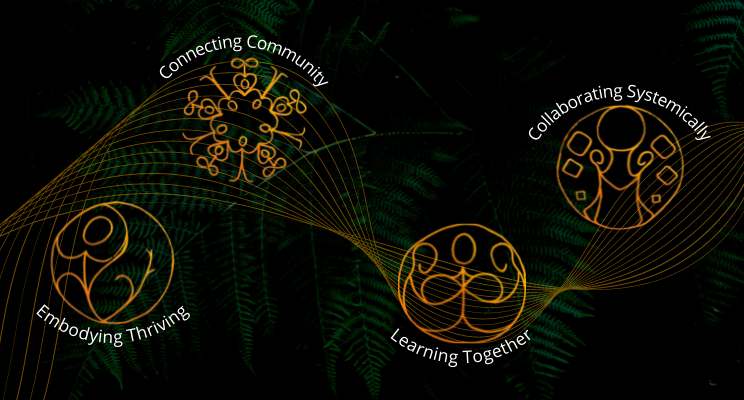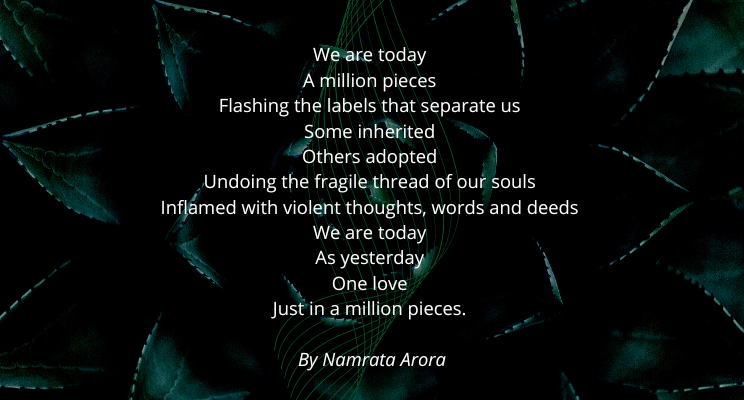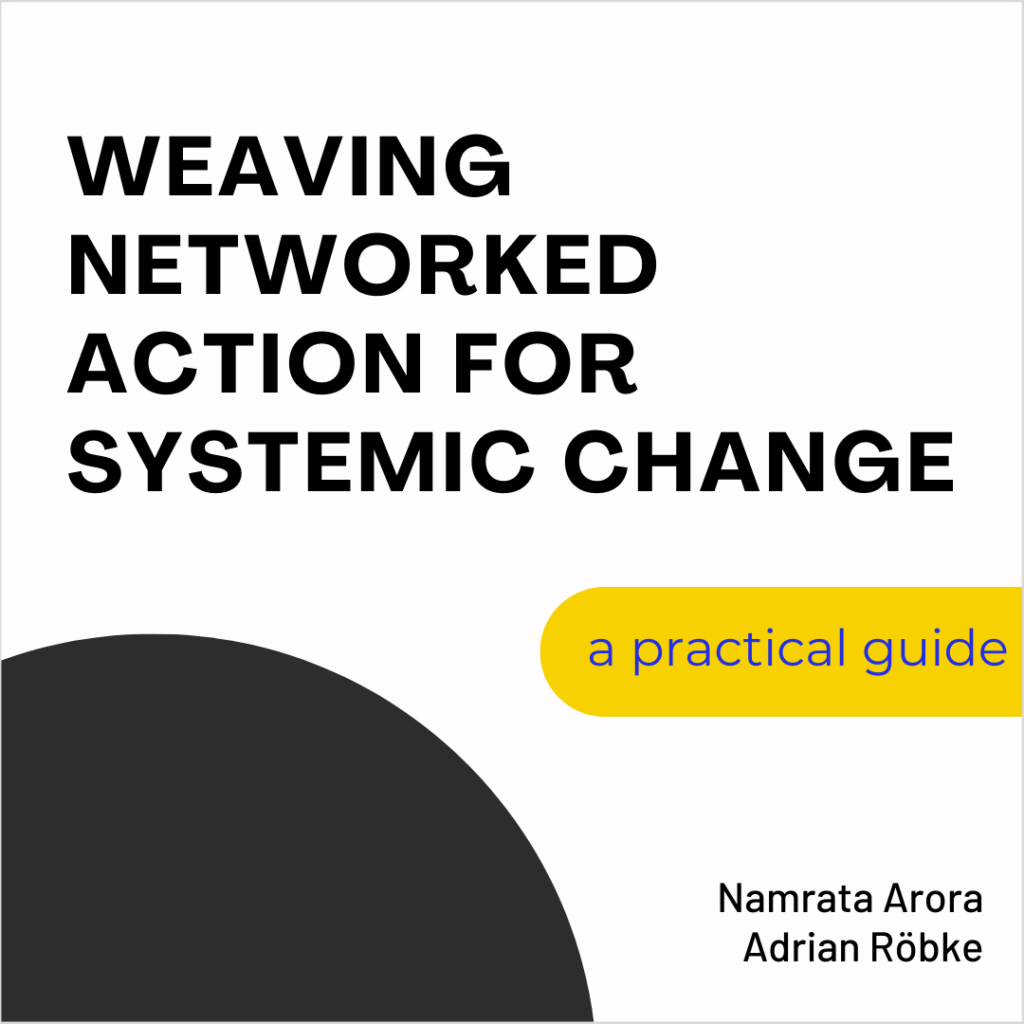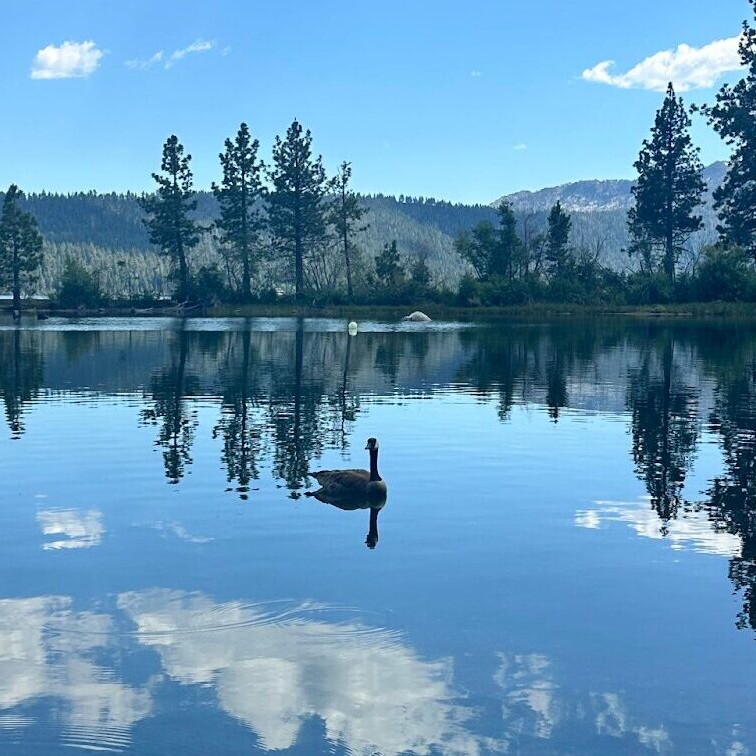Written by Namrata Arora & Adrian Röbke as members of The Weaving Lab.
This short guide synthesizes the practice of weaving for leaders, social entrepreneurs, and facilitators looking for holistic ways to co-create systemic change.
Introduction: Systemic Change Towards a Thriving World
We find ourselves in intensifying personal, societal and ecological turbulence. Our societies are transitioning and natural ecosystems are eroding at an alarming rate. We are at a collective choice point: How we act right now will determine if the planet remains livable for humanity and many other species [1].
On the bright side, many are contributing to societies that honor the fundamental interrelation of people and the planet. Now, there is a great need to share power and re-imagine our systems together. We are called to learn our way into a more beautiful expression of being human together.
Since ancient times, communities of people have gathered to resolve issues, share concerns, celebrate, mourn and partake in each other’s ‘human beingness’. These traditions are rooted in indigenous cultures and continue in many cultures [2]. Based on these lineages, there is a growing body of knowledge that supports emergence through collaboration [3].
Yet, we still lack individual and collective capacities to align across our differences. It is therefore essential to learn how to weave. Weaving entails interconnecting people, projects and places in synergistic and purposeful ways [4]. This short guide introduces you to specific mindsets, skills and practices to catalyze systemic changes.
Weaving in Action – Stories from The Field
To center our exploration of weaving in real life, here are three stories of inspiring weaving in action:
- Fundación Mi Sangre has the purpose to co-create a culture of peace in Colombia. They convene people from the military, government, teachers, parents and youth. For 15 years they created awareness, learning, and innovative practices and were able to impact the lives of 1,5 million people.
- The Bioregional Weaving Labs (BWL) Collective takes collective action across Europe to make climate and biodiversity plans more actionable. They weave their expertise, knowledge, and teams to restore, protect, and regenerate landscapes and seascapes. Through mapping the needs of bioregions, they can address root causes through nature-based solutions.
- Service Space, one of the world’s largest volunteer-run international organizations, believes that small, collective acts can transform the world. Started in 1999, they aim to bring meaning to the front and center of our lives. Service Space connects people from around the world, catalyzing collaboration to spark the spirit of generosity, making the world a better place through meaningful action.
These initiatives have in common that they foster inclusive collaboration, which is enabled through specific weaving ways and practices.
Weaving Ways and Practices
Weavers foster coherent, purposeful and synergistic communities and social ecosystems. Through the use of liberating structures that are grounded in our ‘interbeing’, they facilitate inclusive conversations, cross-pollinate knowledge and align action [5, 6]. Gathering together in a formal setting is not necessarily weaving. If there is an expression of compassion and interrelatedness of self, others and the planet, weaving is in play. Throughout six years of action research, 300 + weavers from diverse cultures in The Weaving Lab identified four specific ways and practices:
1. Embodying Thriving – Becoming inclined and equipped to thrive through practices that nurture personal, societal and ecological wellbeing.
2. Connecting Community – Creating conditions for diverse and inclusive communities in which people feel belonging and have a shared purpose.
3. Learning Together – Developing processes for cultures of continuous sharing, improvement and experimentation.
4. Collaborating Systemically – Fostering cooperation for strategies that transform systemic mechanisms and mindsets.
Embodying Thriving
Weavers become inclined and equipped to thrive through practices that nurture personal, societal and planetary wellbeing [7]. They embody life-affirming qualities and virtues. Inner and outer development are truly interdependent. Personal well-being includes emotional, physical, mental and spiritual dimensions and our sense of belonging, purpose and contribution. Societal well-being relates to how we create cultures that center on equity, thriving and justice. Planetary well-being refers to the thriving of all species, ecosystems and places. Weavers bring these different layers together in a coherent practice.
Weavers cultivate virtues and steward thriving cultures:
- Cultivating an inner awareness to stay present in uncertain situations.
- Showing up with vulnerability and heart-centered listening.
- Developing compassion for diverse people and beings.
- Being playful and creative in the face of challenges.
- Fostering wisdom through continuous inquiry.
- Embodying resilience in the face of adversity.
Reflection Question: What personal and collective practices to embody thriving more fully do you want to learn?
Connecting Community

Weavers create conditions for diverse and inclusive communities in which people feel belonging and have a shared purpose. They foster trustful, nourishing and dynamic relationships through patience and frequent communication. Sharing personal stories, needs and dreams are great ways to begin. As a solid foundation of trust is developing, people start to feel a sense of belonging. We are woven into an intricate web of life including diverse species and places. It is therefore critical to foster significant relationships with the wider natural world. And, to learn from nature’s principles how to participate in diverse ecosystems.
Specific practices:
- Supporting the ecosystem through difficulties, roadblocks and failures.
- Maintaining momentum and direction through continuous alignment.
- Co-creating lived experiences of oneness with the web of life.
- Facilitating differentiated roles and sub-communities.
- Expanding distributed power and decision-making.
- Stewarding a common culture and identity.
Reflection Question: What skills do you want to learn to better support your communities to become more interconnected and aligned?
Learning Together
Weavers steward processes for cultures of continuous sharing, learning and experimentation. Learning is an ongoing process of ‘becoming’, which takes humility and perseverance. It is therefore essential to adopt a growth mindset, question blind spots and reflect often. Real learning happens when people meet between diverse perspectives and ways of knowing. Weavers, therefore, co-develop community-wide learning values, principles and aspirations. These are the basis for action-learning approaches that are grounded in the coherence of the head, heart and hands. Through constant learning, the ecosystem can remain adaptive and resilient in ever-changing circumstances.
Specific Practices:
- Designing, facilitating and harvesting collective learning experiences.
- Translating and contextualizing dynamic flows of learning.
- Using storytelling and visualizations to communicate.
- Developing reflective and contemplative practices.
- Collecting, synthesizing and evaluating data.
- Creating generative experiences in nature.
Reflection Questions: How can you center a beginner’s mindset in your approach to weaving?
Collaborating Systemically
Weavers foster collaborative strategies that transform systemic mechanisms and mindsets. They seek to tackle the root causes of challenges instead of symptoms. This means paying attention to underlying systemic dynamics through sensing interconnections, relationships and energy flows. It is then possible to tackle root causes and leverage points for systems change. Based on these, an ecosystem can then implement targeted interventions. Over time, aligned action can fundamentally challenge and replace dominant institutions, mindsets and structures. So, through synergizing diverse efforts, it becomes possible to move a system towards a more thriving state.
Specific practices:
- Checking the health of an ecosystem and catalyzing continuous evolution.
- Co-creating, adopting and spreading transformative innovations.
- Supporting developmental evaluation to stimulate adaptation.
- Integrating theories of change of diverse collaborators.
- Organizing and resourcing strategies and projects.
- Mapping systems, networks and feedback loops.
Reflection Question: How can you support your collective to address systemic root causes through targeted action?
The Weaving Process ~ Learning from Circle Work
In order to understand how weaving works, we take one of its applications, ‘Circle Work’ and elucidate the process that it entails [8]. In ‘Circle Work’, a group of participants who align with an agenda gather together for co-sensing and co-creation, led by a skilled convener, who offers to hold space for emergence using a set of guidelines, a time frame and a purpose as the three guideposts. While ‘Circle Work’ has been around since ancient times, practiced by various indigenous cultures, its more modern applications range from community action to education to employee engagement. Even though the purpose of the gathering may be predefined, however, owing to its emergent nature, the outcomes of the session(s) cannot be predetermined.
The Working of a Circle
‘Circle Work’ starts with an articulated intention that is driven by a purpose and aligns with a group of potential participants. The circle convener volunteers to be a ‘space holder’ for what might want to emerge from the collective. A circle is situated in a specific moment of time, given a context that resonates with and binds a group of people who might be willing to gather in a space that is earmarked for weaving. This could be a virtual or physical space that is neutral and may provide a sense of safety for free expression.
Various elements which are at interplay in the process of weaving include human elements and non-human tangible and abstract elements. Human elements include the Circle Convenor or Weaver and participants; tangible non-living elements include the physical environment including ‘Circle Principles‘ (guidelines which enable the creation of a safe space for sharing), sound, space layout and intangible elements include time, space, intention and consciousness of all those who are present.
A multitude of factors governs the nature of interplay among these elements making each circle experience unique and irreplicable. When in a circle, participants can be said to experience a transference of consciousness among themselves and with the center of the circle, thus unfolding and giving form to the group’s emergent collective intention. It is for this reason that presencing is a key aspect of any weaving. Our individual state of being has a deep impact on what emerges in the collective.
The Flow of Circle Work
The proceedings of a circle start with a brief centering exercise in the form of meditative music or the playing of a singing bowl or the reading of poetry or spiritual text or simply leading participants into a mindfulness activity such as breathwork. Bringing all participants into their presence invokes the sacredness of the space. In a physical setting, the center might be set up as an altar with flowers, water, incense, a lamp and other elements that the host might find appropriate.
This centering is followed by a reminder of the circle principles or guidelines for engaging with the circle. These principles are to be viewed as gentle scaffolding and may be reviewed and revised by all as necessary. They uphold the core values of deep listening, confidentiality, inclusion, respect and authenticity that guide the circle members through their time together.
An open-ended question leads circle participants into the circle, thus setting the stage for the theme that might be pre-decided. Anchoring the circle in an inquiry enables a common purpose to unfold, thus allowing for new insights and action steps to emerge through a shared resonance among participants.
As the circle progresses, participants gain an opportunity to practice deep listening, thus opening themselves to new ways of thinking. Circles cultivate compassion and create a sense of inclusion for all. When convened on an ongoing basis, circles create a feeling of belonging and provide a fertile ground for sustainable change to take roots.
The closing of a circle is marked by a checkout which might be in the form of brief reflections by all or a compassion prayer, wishing well for all. A theme for the next circle might emerge at this point, thus allowing for the circle to ‘remain unbroken’ till the next gathering.
Success Criteria
Embodying gratitude, all participants are encouraged to empty their bowl of expectations and use the opportunity to offer their precious gifts, including deep listening and honoring silence when it is collectively called for.
Various formats of circles or related gatherings, referred to by a variety of names, are now being practiced around the world and signal the onset of a ‘movement of movements [9].
Now What? – Our Invitations
1. Deepen your unique style of weaving
The beauty of working collectively is that you inherit your unique niche and synergize your role with that of other weavers. We, therefore, invite you to further experiment and make these practices work in your context.
2. Learn, co-create and spread weaving ways and practices
Together we can further build the field of weaving. This means learning, exchanging ideas and innovating together. So, find and co-create the spaces that nourish your learning.
3. Dive into additional resources, tools and perspectives
There are many articles, books, and guides out there that you can explore. To dive into more specific topics, you can use the hyperlinks in this article. To access further resources, review the references.
We invite you to join us in the inquiry of ‘how does one balance the interplay of flow and outcome through the weaving process?’ There is no formula for ensuring this balance and this is where the context of the individuals, the collective and the shared intention or purpose play a key role. While emergence is constant, the duration that it takes to accomplish the outcome of a weaving process might vary. There is no endpoint to weaving. We are part of a continuous process of evolution that always evokes new questions, challenges and opportunities.
Conclusion: Cultivating Our Weaving Practice
The Weaving Ways and Practices are an open-ended exploration of making sense of weaving. There is a wide variety of skills to learn and we cannot do that by ourselves. So, we warmly invite you to share your thoughts about this article. It is in the messy field between perspectives and worldviews that we can engage in weaving fully. Let us dream, dare and do everything in our power to co-create a more thriving world. We end with this poetic reflection, hoping it provides you with the inspiration we need to cultivate this work in our world:
Acknowledgements and Gratitude
We thank every contributor to The Weaving Lab for the countless heart-centered conversations that created the weaving ways of practices. Specifically, we appreciate Tjin Tjoelker, Victoria Haro, Ben Roberts, Ross Hall, Carolina Obara, Kai Brouwer, Robyn Whittaker and Nick Graham for their generous feedback. Lastly, we acknowledge every one of you who is embodying more thriving on the planet, including the land and our non-human kin.
About The Authors
Contact her via: LinkedIn or E-Mail.
Contact him via: LinkedIn or E-Mail.
You can also download a pdf with a link to this guide to save to your personal library by visiting the Network Weaver Resource Page.
Resources
[1] State of the World:
- Climate Change 2022: Impacts, Adaptation and Vulnerability by IPPC
[2] Indigenous Knowledge:
- Sand Talk – How Indigenous Thinking Can Save the World By Tyson Yunkaporta
- Braiding Sweetgrass by Robin Wall Kimmerer
[3] Regenerative Leadership & Networks:
- Designing Regenerative Cultures by Daniel Christian Wahl
- Regenerative Leadership – The DNA of life-affirming 21st-century organizations By Giles Hutchins & Laura Storm
- Leading from the Emerging Future: From Ego-System to Eco-System Economies by Katrin Kaufer and Otto Scharmer
- Impact Networks: Create Connection, Spark Collaboration, and Catalyze Systemic Change by David Ehrlichman & The Converge Network.
[4] Definition and practice clusters by The Weaving Lab
[5] Facilitation:
- The Surprising Power of Liberating Structures: Simple Rules to Unleash A Culture of Innovation by Henri Lipmanowicz and Keith McCandless
- The Art of Hosting
[6] Inner Development:
- Thich Nhat Hanh Interbeing: The 14 Mindfulness Trainings of Engaged Buddhism
[7] Thriving:
- The Age of Thrivability: Vital Perspectives and Practices for a Better World by Michelle Holliday
- Thrive: The Third Metric to Redefining Success and Creating a Life of Well-Being, Wisdom, and Wonder by Arianna Huffington
[8] Hosting Circles:
- The Magic of Circle Work by Jalaja Bonheim
- The Circle Way by Ann Linnea and Christina Baldwin
- A Millionth Circle by Jean Shinoda Bolen
[9] Blessed Unrest by Paul Hawken
Originally published HERE
featured image found HERE
Network Weaver is dedicated to offering free content to all – in support of equity, justice and transformation for all.
We appreciate your support!
donate in the box above or click here














